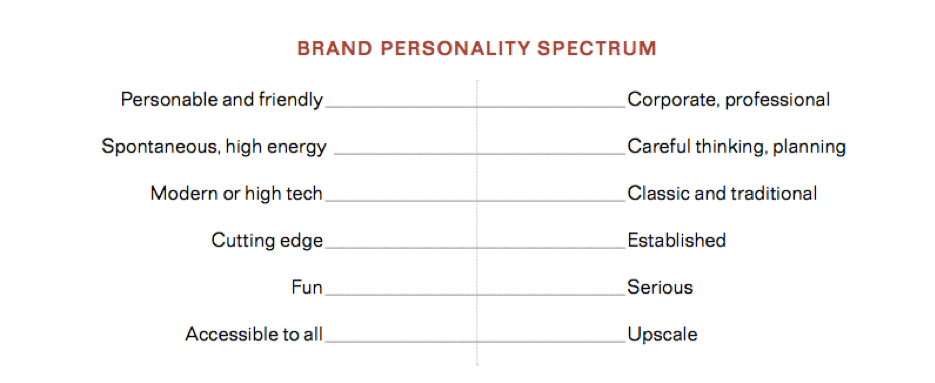How To Create A Style Book

This article has been updated since its original publication.
Sometimes branding fails happen when something gets lost in translation. For example, when Coors translated its slogan "Turn It Loose" into Spanish, it used a colloquial term for diarrhea.
More often, though, branding fails happen because of a lack of a clear style guide, which can result in inconsistency or miscommunication among your content team.
#Branding fails happen because of a lack of a clear style guide, says @SashaLaFerte via @CMIContent. Click To Tweet
A style guide also can be a way to foster content authenticity by containing instructions for all parties creating content for your company.
This article addresses why your organization needs a style guide, details what to include in your style guide, and gives examples of top-notch style guides to ensure streamlined external communications.
Why you need a style guide
First, what is a brand style guide?
A brand style guide is a holistic set of standards that defines your company's branding. It references grammar, tone, logo usage, colors, visuals, word usage, point of view, and more.
A brand style guide references grammar, tone, logo usage, colors, visuals, point of view, says @SashaLaFerte via @CMIContent. Click To Tweet
By creating a detailed brand style guide, you ensure that your published content is consistent, polished, recognizable, and more enjoyable. A thorough, well-thought-out style guide puts your readers first. It creates a recognizable, engaging voice and personality that readers can form a more personal connection with.
What to include in your style guide
GatherContent recommends keeping a style guide to between four and five pages. Anything longer is too much to digest. Before creating it, research who your audience members are and what they want. Create a style guide based on what resonates with them.
Keep style guide to no more than 4 or 5 pages, according to @GatherContent. @SashaLaFerte via @CMIContent. Click To Tweet
If you already have a mission statement or boilerplate "About Us" description for your brand, start there. Revisit it to make sure it's not only on point with what it says but how it says it. If you define your brand voice as conversational, but your mission statement is filled with corporate jargon, it's probably worth revisiting.
From there, create a table of contents for your style guide and use it as an outline. All style guides should include an introduction. This might include a mission statement, letter from the CEO, About Us page, or general overview of the company's brand and audience. Next, create a section on how your brand talks and writes, and another section on branded visuals. Here's a breakdown of what these sections should include.
Writing section
Roughly 45% of a brand's image can be attributed to what a brand says and how it says it. Details like whether to use "&" or "and" or if you should use the numerical or written versions of numbers may seem trivial. But the sum of these details adds up. If they are consistent throughout your published work, they convey a coherent voice, coherent thinking, and a credibility impossible to attain without this consistency.
Here are some tips for ensuring that your brand guide aids in creating first-rate content:
- Baseline guide: Use an existing style guide (like AP Style) as a baseline. Add your brand's differences, such as the use of the Oxford comma or general best practices for emojis.
- Formatting: Add a small section around formatting. Include details on how to format bullets, lists, hyphens, and quotes.
- Tone and voice: Give descriptions of these and examples of how the tone and voice might be right or wrong. If you want a playful tone, explain what that means. This section also should include information on sentence structure. Do you want long complex sentence structures, a mix, or Hemingway simplicity? (Pro tip: You don't want long sentences if you want to be persuasive.)
- Additional details: Include a section on how to engage, words to stay away from, and any other details important to your brand. Use the brand personality spectrum below to get a better idea of what's important to your brand's written content.
In your brand style guide, give descriptions and examples of tone and voice, says @SashaLaferte via @CMIContent. Click To Tweet

Visual section
Visual cues are as important to brand consistency as the written aspects. Consider including these elements in your style guide's visual section:
- Formats: Include information on how to stay on brand with other formats of content, including infographics, video, motion graphics, etc.
- Colors: Detail your brand's palette of colors, including function. Make sure to include the hex, CMYK, and RGB codes for each color, as well as Pantone numbers.
- Logo: Include all versions of your logo and examples of proper uses. If you have older or frequently misused versions, include them as "don't-use" examples.
- Fonts: Include all brand fonts for headings, paragraphs, etc., and their uses.
- Presentation format: Include a link to a company slideshow template for presentations.
2 brands with awesome style guides
Here are two brands we all know that have first-class style guides and highlights on what makes them special.
MailChimp
MailChimp's style guide thoroughly prepares any contributor to create on-brand content. Check out its style guide if you're looking to create a guide with a lot of detail. Highlights include the voice and tone section and word list section. MailChimp also breaks out writing guidelines by content type, from emails to blog posts to social media.

[email protected]'s style guide prepares any contributor to create on-brand #content, says @SashaLaferte via @CMIContent. #Contentmarketing #Examples Click To Tweet
Uber
Uber's brand style guide is packed with GIFs and videos that convey the very movement Uber is so proud of. Uber uses this site to not only describe brand style but to share the brand story, showcase examples of its branding done well, and provide helpful tools.

[email protected]'s brand style guide is packed with GIFs and videos that convey the very movement Uber is so proud of, says @SashaLaferte via @CMIContent. #Contentmarketing #Examples Click To Tweet
According to Uber, the guidelines cover nine elements: logo, color, composition, iconography, illustration, motion, photography, tone of voice, and typography. The style guide's home page also makes it convenient for users by highlighting and linking the most frequently requested assets:

Create your brand's style guide
Now you know why a good style guide is important, what it should look like, and what to include. It's time to create one for your company. Include the marketing team, sales team, and any other creatives working on your marketing and products when creating a style guide. Upon completion, share it companywide, and store it as a living document in a place that's easy to find.
Get everybody on the same page for your content marketing professional development. Join us for the first-ever virtual Content Marketing World this October. Register today!
Cover image by Joseph Kalinowski/Content Marketing Institute
How To Create A Style Book
Source: https://contentmarketinginstitute.com/2020/07/how-to-brand-style-guide/
Posted by: coaxumdevens.blogspot.com

0 Response to "How To Create A Style Book"
Post a Comment